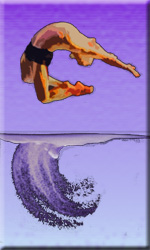 "Who is Rain?" asked the little girl in the lantern light.
"Who is Rain?" asked the little girl in the lantern light.
"Rain is a dancer," I replied.
"A dancer?" she said, prompting for more.
"Yes, a dancer," I repeated, pausing for a moment to glance at our slumbering fields and up to the empty sky. The night was full and people were starting to arrive.
I raised my hand and gestured toward the stars, "Rain dances on the veil above, his feet tapping and bouncing on the cushion of the sky. Sometimes his feet will sink into the pillow of a cloud and water shakes loose and falls below to wash the earth and feed our crops. Some days he dances lightly, others with tumbles and leaps, the sound of his landing shaking the earth as his smile flashes and lights up the world."
"But he doesn't like to dance here," the little girl said, sandals removed and toes bunching on the dry earth beneath her feet.
"No," I replied, "not for a long time."
"But why?"
The truck with the speakers rumbled by. I waited until it had stopped at the improvised floor, where the circle would form, and then I leaned forward in my chair and said, "Let me tell you a story."